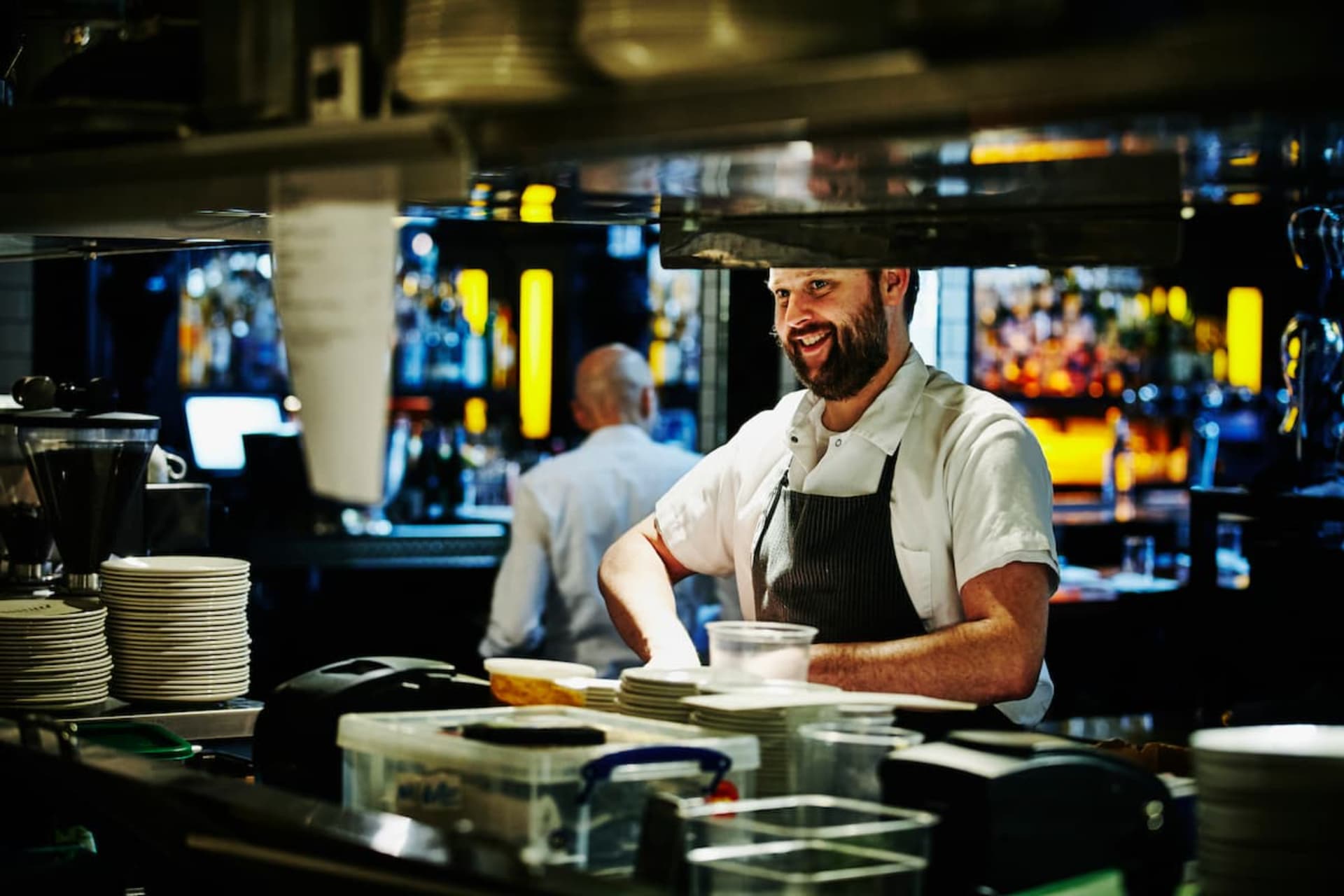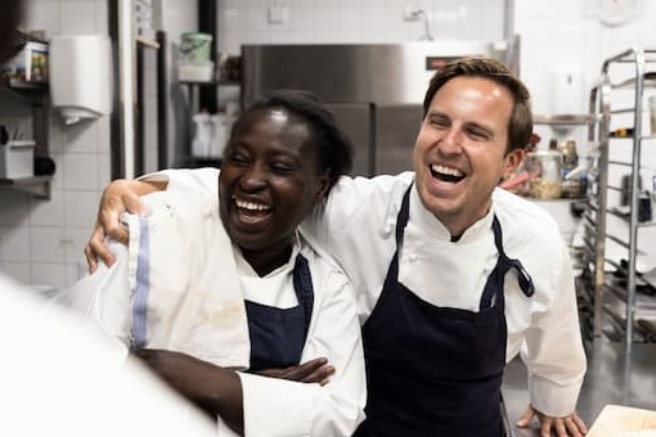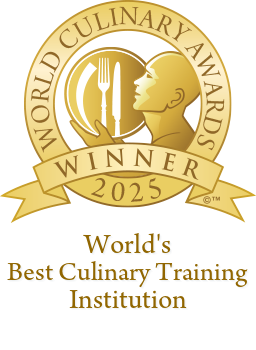Behind the scenes: what is a chef lifestyle like?

The culinary industry is expanding rapidly, with approximately 22,000 openings for chefs and head cooks each year. For aspiring food professionals, the appeal of crafting exquisite dishes and the high-energy environment of a working kitchen can be incredibly enticing. However, being a chef involves much more than simply preparing delicious meals; it requires a broad range of skills, discipline and creativity. As the foundation of any culinary establishment, chefs have significant responsibilities and their careers are a demanding yet rewarding combination of creativity, leadership and resilience.
This article explores the realities of a chef's lifestyle, examining responsibilities, daily routines, challenges and the immense satisfaction associated with this role.
What are the different types of chefs?
The professional kitchen is a well-oiled machine overseen by a specialized team of experts with distinct roles and responsibilities. Some of the different types of chefs include:
-
Executive chefs: experts who lead the entire kitchen operation, oversee menu development, manage staff, establish culinary direction and ensure the kitchen runs smoothly and profitably
-
Sous chefs: support daily operations, manage staff schedules, coordinate kitchen tasks and act as a liaison between the executive chef and the kitchen team
-
Line cook: the backbone of the kitchen, they specialize in a particular preparation area, such as sautéing, appetizers or desserts. They work independently, following recipes and instructions from chefs de partie or head chefs
-
Pastry chefs: specializes in baking and pastry arts, designing pastry menus and handling delicate techniques such as tempering chocolate and sugar work
-
Garde manger chef: oversee the cold kitchen and are responsible for salads, appetizers and cold platters. They excel in food presentation, artistic garnishing and maintaining the quality and freshness of cold dishes
The skills needed to be a chef
This role requires more than just a passion for food. A successful kitchen professional must have a broad skillset with technical expertise, leadership insight and an unwavering commitment to excellence. Some of the key chef skills needed include:
-
Culinary techniques: a vast repertoire of cooking methods is helpful. These fundamental cooking techniques include knife skills, various cooking methods such as braising, sautéing and grilling as well as a deep knowledge of flavor profiles and ingredient interactions
-
Organization and time management: have exceptional organizational skills to prioritize tasks, manage multiple orders simultaneously and ensure all dishes are prepared and delivered on time
-
Communication and teamwork: delegate tasks, provide constructive criticism and encourage a collaborative environment
-
Problem solving and adaptability: be quick thinkers, able to troubleshoot issues, make substitutions when ingredients are unavailable and adapt to changing situations while maintaining quality standards
-
Leadership: inspire and motivate staff, delegate tasks effectively and build a positive and respectful work environment
-
Passion and creativity: a love for food and a drive to create culinary masterpieces. Chefs constantly innovate, experimenting with new flavor combinations and seeking ways to improve dishes
-
Stress management: the ability to remain calm and focused under pressure and handle intense situations, such as busy dinner services or unexpected challenges, without compromising quality or efficiency
By studying for a culinary arts degree from a renowned school, you can develop your skills and ensure you're prepared for your career ahead as a chef.

A typical day in the life of a chef
From the pre-dawn hum to the clatter of late-night cleaning, professional kitchens are a world of constant activity, though the exact tasks will vary based on the type of chef and venue. Let’s look at what a day in the life of a chef typically looks like.
Morning prep
The day begins early in the morning with reviewing the menu and checking inventory. Next, the chef will inspect the quality and freshness of perishable items. After confirming the inventory, they plan the day's cooking schedule, considering cooking times and preparation methods to optimize kitchen efficiency.
Kitchen operations
As the morning progresses, the kitchen comes to life. Chefs assign tasks to their staff, delegating responsibilities based on individual strengths. The team works together to prepare ingredients, coordinate cooking times and maintain cleanliness and organization. Throughout this process, the chef monitors each station, offering guidance and ensuring everyone follows the established standards of taste and presentation.
Service preparation
Approaching midday, the focus shifts to final preparations for service. The chef inspects every dish before it leaves the kitchen, ensuring each plate meets the restaurant's exacting standards. Simultaneously, they communicate with front-of-house staff to discuss any special requests or dietary requirements, ensuring a smooth transition from kitchen to dining room.
Service execution
During peak hours, the kitchen reaches its crescendo as orders flow steadily. Continuous communication between the chef and kitchen staff ensures challenges are addressed promptly and efficiently. As plates are delivered to awaiting guests, chefs remain vigilant, maintaining quality control and responding to feedback with grace and professionalism.
Post-service evaluation
After the rush subsides, the chef thoroughly reviews the day's service. They debrief the team, providing constructive feedback and encouraging a culture of continuous improvement. They also update inventory and place orders for replenishment.
Reflection and planning
Toward the end of the day, a chef reflects on the day's achievements and challenges to inform future menu planning and kitchen management strategies. They may research new recipes, experiment with ingredients or seek inspiration from culinary trends to innovate and refine the restaurant's offerings. Finally, the kitchen is cleaned and organized, ready for the next day.
Common challenges chefs face
It's typical for a chef to face various tests of their skills, patience and resilience. These challenges can be physically demanding and mentally taxing, requiring a strong professional commitment and can include:
-
Demanding work schedules: long hours, split shifts and working weekends are commonplace
-
High-pressure environment: kitchens are busy workplaces, often characterized by tight deadlines and demanding customers
-
Physical demands: standing for long periods, repetitive movements and working in hot kitchens can lead to fatigue and potential injuries
-
Competitive industry: the culinary world can be cutthroat, with talented chefs vying for positions in top restaurants
-
Work-life balance: the demanding schedule often leaves chefs with limited time for personal lives and social activities
-
Ingredient management: ensuring the availability and freshness of ingredients while minimizing waste and staying within budget
-
Health and safety regulations: adhering to stringent health codes and safety standards involves rigorous practices and regular training
-
Team coordination: managing a kitchen team, ensuring effective communication and resolving conflicts quickly are essential
Rewards of a culinary career
While the challenges are undeniable, a chef's life offers many benefits far beyond a paycheck. Some of the reasons why many find deep satisfaction in this demanding profession include:
-
Creative expression: the kitchen allows passionate chefs to explore their creativity. Developing innovative dishes, experimenting with flavors and artistically presenting food provides a unique sense of fulfillment
-
Instant gratification: chefs witness the immediate impact of their work. Seeing satisfied smiles on customers' faces after they have eaten a delicious meal offers a powerful sense of accomplishment
-
Constant learning: the culinary world is ever-evolving, with new techniques, ingredients and cuisines always emerging. For chefs who thirst for knowledge, there's always something new to learn and explore
-
Teamwork and camaraderie: the fast-paced environment promotes a strong sense of camaraderie among kitchen staff. Chefs work together under pressure, relying on each other to deliver exceptional service
-
Career growth and opportunity: the industry offers a variety of professional paths for ambitious chefs. There are numerous avenues for growth and advancement, from opening restaurants to pursuing specialized fields
How to become a chef
For aspiring professional cooks, a culinary arts degree from a reputable school offers a structured pathway to success. This focused education equips you with the knowledge, skills and industry connections to excel in a professional kitchen. The advantages a culinary arts degree program provides are:
-
Essential skill development: a well-designed program offers comprehensive training in fundamental French cooking techniques, food safety protocols and kitchen management. You'll master knife skills, explore various cooking methods and gain a deep understanding of flavor profiles and menu planning
-
Internship opportunities: many degree programs integrate internships into the curriculum, providing invaluable hands-on experience in professional kitchens. Internships allow you to test the waters of a real-world kitchen environment, develop practical skills under the guidance of experienced chefs and build valuable industry connections
-
Mentorship and guidance: throughout your culinary education, you'll benefit from the expertise of experienced chefs and instructors. These mentors provide personalized guidance, address your questions and offer insights developed through years of experience in the food industry
-
Networking and industry connections: culinary schools often host guest lectures by renowned chefs, restaurateurs and food industry professionals. These provide valuable networking opportunities, allowing you to build relationships with key players in the food and beverage landscape. The connections you make during your education can open doors to future employment opportunities
-
Discipline and professionalism: the rigorous nature of a culinary education instills discipline and a strong work ethic. Adhering to high standards of professionalism prepares students for the challenges of working in high-pressure environments
-
Access to resources: culinary institutes such as Ecole Ducasse provide access to state-of-the-art kitchen facilities, specialized equipment and comprehensive libraries. These resources enable students to experiment and hone their craft
-
Career opportunities: graduating from culinary programs opens up a wide range of employment opportunities, from fine dining restaurants to catering companies and beyond. A degree can open doors to advanced positions and leadership roles in the food industry
Conclusion
The life of a chef is a demanding yet fulfilling combination of artistry and resilience. It's a world of long hours, intense pressure and the constant hum of activity. But for those passionate about transforming raw ingredients into edible masterpieces, the rewards are undeniable. Chefs carry out many tasks, from menu development to cost control, ensuring every dish meets the highest standards, while also using creativity to make incredible dishes.
Earning a culinary arts degree is an investment in your future as a chef and will equip you with the tools you need to thrive in the exciting and ever-evolving world of professional kitchens.


